Standing on the ancient walls of Kythira’s Venetian castle, I just stopped and stared—honestly, the view is unreal. The whitewashed capital of Chora spills out below, like a painting someone forgot to frame, and the twin bays of Kapsali Harbor curl into the Aegean with this effortless grace.
Kythira’s Chora and Kapsali Harbor blend medieval history, traditional Greek architecture, and jaw-dropping coastal scenery in one compact package. That 16th-century Venetian fortress commands the hilltop, and from up there, you get sweeping views of the harbor and the mysterious islet of Hytra—locals whisper that’s where Aphrodite was born.
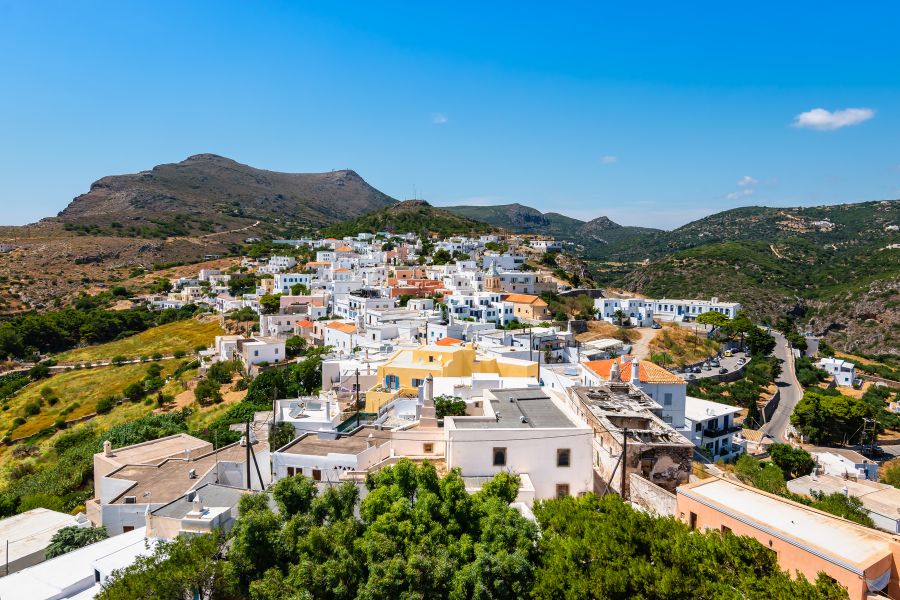
When I visited this southern Greek island, I finally got why these twin spots pull in travelers who crave the real deal. Wandering the tight cobblestone streets lined with old mansions, then swimming in water so clear you can see your toes—Kythira feels like a secret Greece keeps just for itself.
Unveiling the Fairytale: Chora, Kapsali Harbor, and the Venetian Castle
Kythira’s charm reveals itself in Chora’s whitewashed lanes, the imposing Venetian Castle perched 200 meters above everything, and Kapsali’s two bays—a harbor that’s basically a postcard.
Storybook Views from the Venetian Castle
When I climbed up to the Venetian Castle of Chora, I just stood there, kind of in awe. It feels like you’re in a storybook.
The fortress stretches 200 meters above the Aegean, and the views go on forever. It was built back in 1503, a massive stone structure about 200 meters long and 80 meters wide.
Sixteen acres of hillside and ancient walls frame the perfect shot of Kapsali Harbor below. From up here, you see both bays, and honestly, it’s clear why this place gets photographed so much.
Look inland and you’ll spot traditional villages scattered over the hills. Strapodi and Manitochori sit along the gorge that winds its way toward Chora.
Back in the day, the fortress ran things for the whole island during Venetian rule. In 1502, a Foreman started overseeing island affairs from right here.
The Double Bay Dream of Kapsali Harbor
Kapsali Harbor isn’t just pretty—it’s almost suspiciously perfect. The two beaches wrap around calm blue water, with rocky headlands hugging both sides.
From the harbor, you look up and the Venetian Castle towers overhead. It’s a direct link to Chora, just a short 1.2 kilometers up the hill.
Offshore, the little rocky islet Hytra sits like a sculpture. Locals call it Avgo and say Aphrodite herself was born right there.
Kapsali acts as Chora’s port and the island’s original harbor. You’ll spot traditional fishing boats, modern yachts, and ferries all bobbing together.
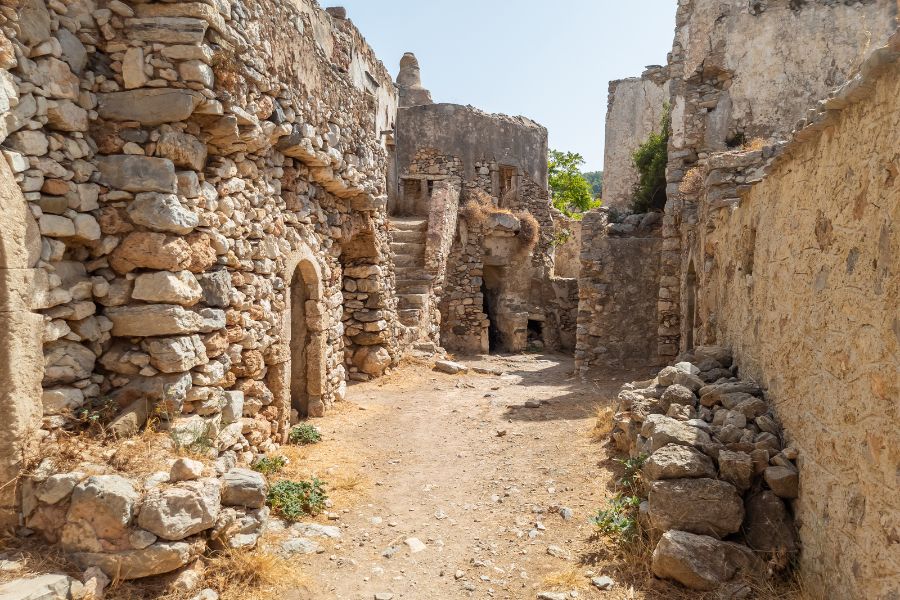
The village curves around both bays. You can grab dinner right on the water, castle in view. I think it’s the mix of scenery and history that makes Kythira’s coastline so memorable.
Historical Origins and Legendary Tales
The Venetian Castle started going up in the late 12th century but really took shape by 1503. Venetians built it after they grabbed Kythira through conquests and treaties.
Inside the castle, I found the Historical Archive of Kythira—old documents stretching back to the 16th century. If you’re into history, it’s a goldmine.
The fortress follows classic Venetian military design. Its high ground gave views over the Ionian, Aegean, and Cretan seas.
Chora kind of grew up around the castle, with narrow streets spiraling out from the fortress. You’ll still see Venetian mansions and old British buildings along these winding paths.
There’s a deep connection between local myths and the land. People here still say Aphrodite was born in these waters, tying Kythira to ancient Greek legends.
Exploring Kythira Chora: The Heart of the Island
Chora clings to a hill in southern Kythira, showing off whitewashed houses, Venetian mansions, and those classic narrow cobblestone streets. The capital blends Greek island style with layers of foreign influence, making the village feel both familiar and totally unique.
Traditional Architecture and Cobblestone Streets
As I wandered Chora’s tight alleys, the mix of architecture really stood out. The whitewashed houses stick to Cycladic style, but then you’ll spot grand Venetian mansions and neoclassical buildings from later periods.
Cobblestone paths snake between buildings, past gardens bursting with flowers and tiny churches. Every turn brings some new little detail—old stonework, colorful doors, wooden shutters.
Some features I couldn’t help but notice:
- White cube homes with splashes of blue
- Ornate balconies on Venetian mansions
- British colonial buildings from the 1800s
- Stone arches and winding passages
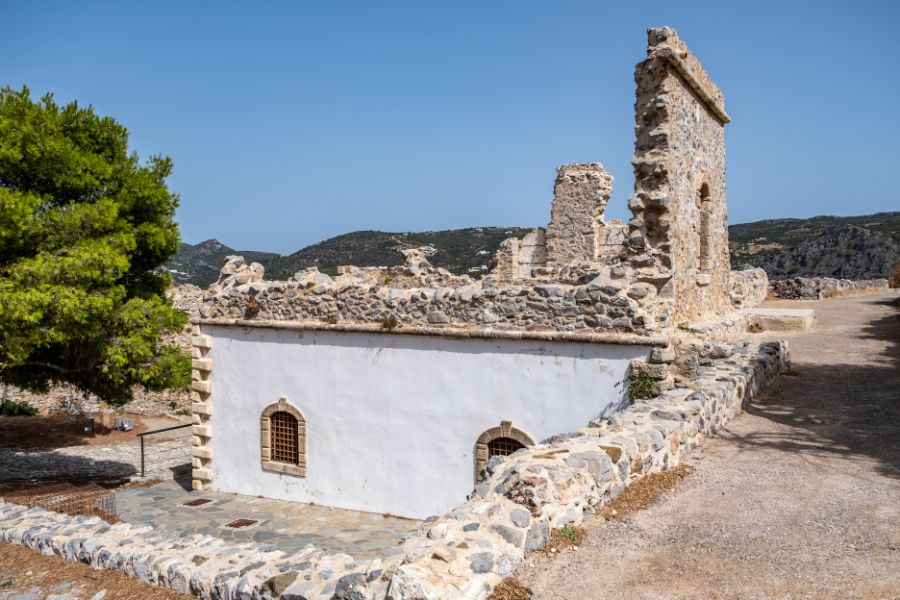
Closer to the castle, the Venetian influence gets stronger. These buildings use local stone, with thick walls that have stood up to centuries of wind and sun.
Local Culture and Village Life
Chora’s central square is where everything happens. You’ll find the City Hall, banks, and all the essentials clustered here, and locals gather for their morning coffee.
Life moves at a slow, easy pace. Shops along the main lanes sell crafts and souvenirs, but it never feels touristy—just genuine.
What makes village life here special:
- Early morning coffee rituals in the square
- Family-run tavernas with local recipes
- Little shops with handmade goods
- Festivals rooted in Orthodox tradition
Inside the castle, the Historical Archive keeps centuries-old documents safe. The Archaeological Museum at the village entrance displays ancient finds, including artifacts tied to the Aphrodite legend.
The Significance of Chora as the Capital
Chora sits at the center of island life, holding government offices and running the show. Its hilltop location gives sweeping views over Kapsali Bay and the Aegean.
This spot has always mattered. Chora controlled sea routes and gave early warning when ships appeared on the horizon.
Why Chora became the capital:
- High ground for defense
- Central on the island
- Easy access to Kapsali harbor
- Long history as the main settlement
The Venetian Castle, finished in 1503, cemented Chora’s place as Kythira’s heart. These days, you’ll find banks and modern services here, making it the go-to spot for locals and visitors alike.
Kapsali Harbor and Village: Seaside Wonders
Kapsali village charms everyone with its twin bays shaped like the Greek letter omega, and water so clear you’ll want to dive right in. The waterfront buzzes with tavernas serving fresh seafood, and the harbor welcomes everything from little fishing boats to sleek yachts.
Kapsali Beach and Its Crystal Waters
Kapsali beach splits into two sheltered bays, both with soft sand and calm water. The omega shape naturally shelters swimmers, so it’s great for families.
The water stays clear all summer. The eastern bay is a bit more protected, while the western side catches a gentle breeze in the afternoon.

Beach activities you’ll find:
- Swimming in safe, calm water
- Pedal boats for rent
- Sea sports gear
- Snorkeling by the rocks
Hytra islet sits just offshore, hiding underwater caves. Locals say Aphrodite was born right there—makes the snorkeling feel extra mythical.
Even when the beach gets busy, it never feels packed. I found early mornings and late afternoons are the sweet spot for a peaceful swim.
Seafront Promenade and Local Gastronomy
A long promenade links both bays, lined with cafes, restaurants, and bars. I lost track of time just strolling, watching boats drift in and out.
Where to eat and relax:
- Taverns with fresh-caught fish
- Modern cafes with sea views
- Laid-back bars for drinks at dusk
- Shops selling local treats
Seafood here is top-notch, especially the grilled octopus and sea bream. Most spots stay open late, so the promenade turns lively after sunset.
Shops along the waterfront have everything from souvenirs to beach gear. The relaxed vibe makes evening walks extra enjoyable.
Kapsali’s Sunset Magic
Kapsali becomes pure magic at sunset. Golden light hits the Venetian castle, and the western bay is the place to be for sunset views.
The rocky coast throws dramatic shadows against the sky, and the water mirrors the colors. It’s a photographer’s dream.
Best places to catch the sunset:
- Western bay beach
- Terraces at waterfront cafes
- The harbor pier
- Rocks near the lighthouse
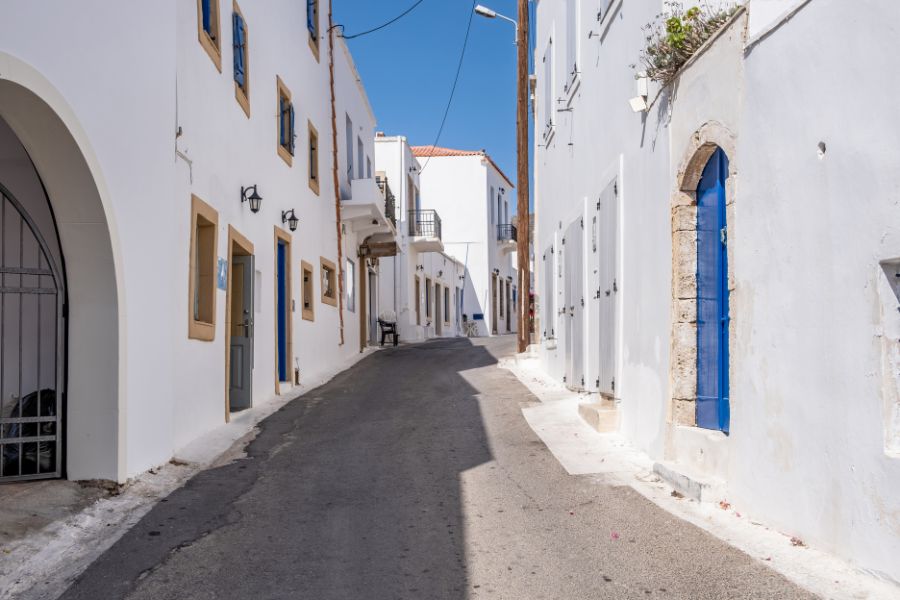
People gather along the shore to watch the show. The combo of castle and sea makes for unforgettable photos.
As the sun goes down, white houses glow and shadows stretch across the bays. I always try to end my day here, soaking in that golden hour light.
Charming Surroundings: Notable Villages and Natural Escapes
Beyond Chora’s Venetian walls, I found villages that really show off Kythira’s character—stone houses, old ruins, and fishing harbors. Each spot has its own flavor, from mountain hideaways to coastal sites full of history.
Discovering Livadi, Kalamos, and Manitochori
Livadi rests in a green valley, surrounded by olive trees and cypresses. I loved walking the quiet stone paths in the morning.
The houses use local limestone, and many families have carefully restored them over the years.
Kalamos sits high on a hillside, offering big views out to sea. I wandered alleys lined with bougainvillea and jasmine, soaking up the peaceful vibe.
The village keeps things authentic with:
- Original stonework
- Classic coffee houses
- Family gardens
- Quiet walking trails
Manitochori gives you a taste of rural Kythira. Locals tend olive groves and vegetable patches, keeping old traditions alive.
The village church brings everyone together for weekly services. I noticed how strong the ties are to customs and seasonal celebrations.
Avlemonas and Paleopoli: Coastal Heritage
Avlemonas blends natural beauty with history on its sheltered harbor. I watched fishermen come back each evening, their boats heavy with the day’s catch.
There’s an 18th-century Venetian fortress here, and climbing its walls gives you a killer view of the clear water.
Swimming spots range from pebble beaches to rocky coves. The water stays crystal clear, probably because the area hasn’t been overdeveloped.
Paleopoli is where you’ll find Kythira’s top archaeological sites. I explored the ruins of an ancient city that once thrived along this coast.
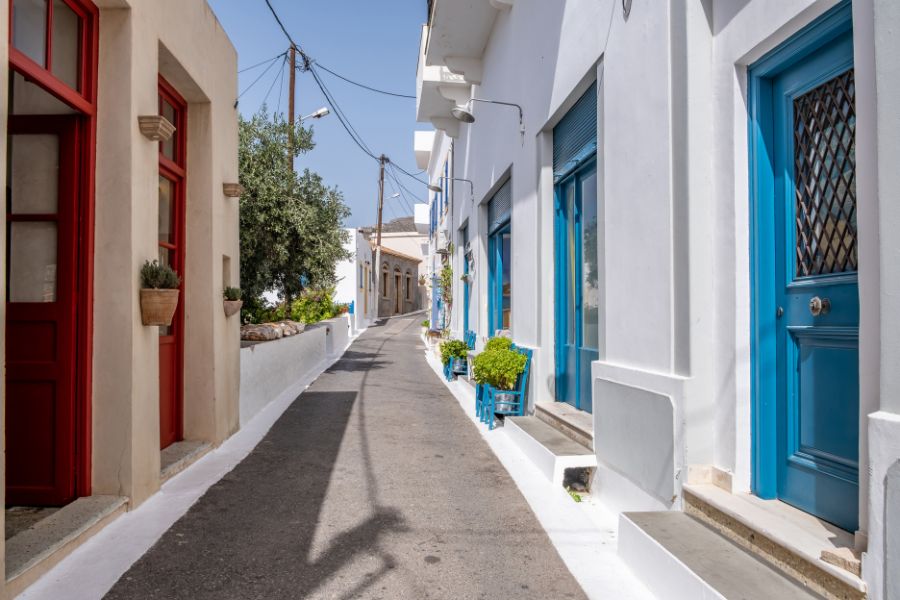
Some highlights include:
- Sanctuary of Aphrodite: Ancient temple remains
- Roman baths: Mosaic floors still intact
- Byzantine church: 12th-century frescoes
The coastline hides quiet beaches you can reach by short hikes. I found these spots perfect for a swim away from the crowds.
Aroniadika: Preserving Kythira’s Authentic Spirit
Aroniadika really captures traditional island life, untouched by the usual rush of tourism. When I wandered through this inland village, I felt a sense of genuine hospitality from the locals that’s hard to describe.
Stone houses gather around a central square shaded by an old plane tree. Olive oil production and small-scale farming keep the village’s agricultural roots alive.
I watched craftsmen repair homes with limestone blocks and clay tiles, sticking to building methods that go back generations. You can see the pride in their work—it’s not just construction, it’s heritage.
Religious festivals bring everyone together for lively community gatherings. I got to see how families prepare traditional foods and keep old customs alive, passing them down like precious heirlooms.
Aroniadika gives visitors a real taste of island life, from home-cooked meals to conversations with locals who seem eager to share stories about Kythira’s past.
Top Experiences and Activities on Kythira
Kythira’s got this irresistible mix of history, wild nature, and pure relaxation. Ancient castles, hidden beaches, and quirky natural wonders are scattered all over—sometimes you just stumble across them.
Must-See Sights and Landmarks
The Venetian Castle in Chora is the island’s crown jewel. Built in the 13th century, it gave me sweeping views of the sea and the landscape stretched out below.
Walking through those stone walls felt a bit like time travel. The castle sits up on a hilltop, so you can spot it from way off.
Mylopotamos Springs might be one of Greece’s most magical little corners. Natural springs wind through a lush green valley, dotted with old watermills.
The water is so clear you’ll want to jump right in, especially on a hot day. I found the stone bridges and shady walking paths made exploring this area a real treat.
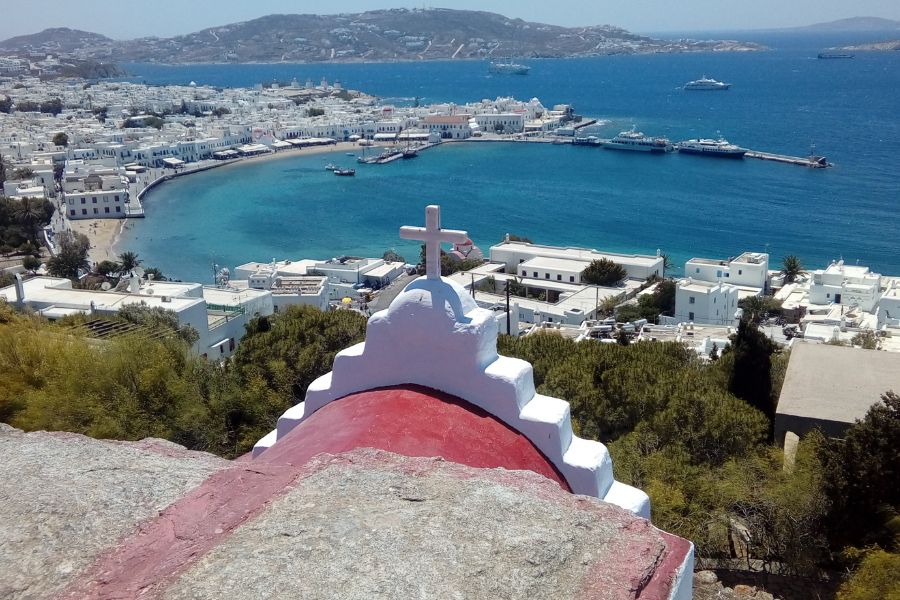
If you want coastal charm, don’t skip the village of Avlemonas. It’s tiny, with a small fishing harbor and a couple of classic tavernas where you can watch the boats bobbing.
The Paleochora ruins tell the story of Kythira’s medieval capital. Hidden among pine trees, these Byzantine church remains let you peek into island life from centuries past.
Water Sports and Outdoor Adventures
Kaladi Beach quickly became one of my favorite swimming spots. The turquoise water and bright white pebbles create a stunning scene.
I grabbed my snorkel and spotted colorful fish darting around underwater caves. The beach stays sheltered from strong winds, so it’s a safe bet for water sports.
If you love hiking, the watermill valley near Mylopotamos is a shaded path that follows flowing streams. You’ll pass by 22 restored stone mills, each with its own little story.
The hike takes about two hours, and I’d say most people can handle it without much trouble. It’s a lovely way to connect with the island’s agricultural past.
Boat trips to Chytra islet leave from Kapsali harbor and reveal hidden sea caves. I watched the afternoon light bounce off the cave walls, creating wild colors.
You can rent a pedal boat or charter something bigger for a longer adventure. Definitely bring your snorkel if you want to explore beneath the surface.
Cultural Festivals and Local Events
Summer lights up with traditional panigyria festivals in different villages. There’s live music, local food, and folk dancing that pulls everyone in.
The Assumption Day festival on August 15th in Potamos is especially lively. Bands play until sunrise and families bring out homemade dishes to share.
In September, harvest festivals celebrate the island’s wine and honey. You’ll get to taste local products and meet the people who make them.
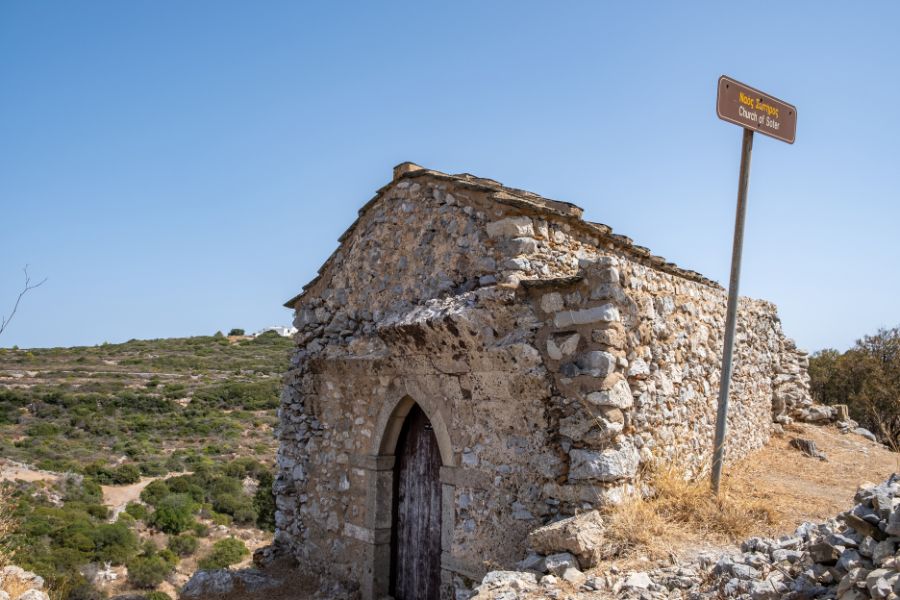
These events fill village squares with string lights and laughter. It’s easy to strike up a conversation with someone over a plate of something delicious.
Beaches Beyond Kapsali
Agia Pelagia Beach on the north coast offers organized facilities and water sports. The sandy stretch runs nearly a mile, so there’s space to spread out.
Beach bars serve cold drinks and snacks. The shallow water makes it a hit with families.
Diakofti Beach sits near the main port, so it’s convenient and beautiful. I noticed ferry passengers often spend layover time here, dipping their toes in the sea.
Melidoni Beach stays quieter than most. The mix of sand and pebbles gives your feet something interesting to explore.
Loutro tis Afroditis (Aphrodite’s Bath) is a spot where natural rock pools get filled by the sea. Local legend says the goddess herself bathed here.
Dramatic cliffs surround this place, making it a photographer’s dream. I’d recommend visiting when the sea is calm for the safest swim.
Planning Your Visit: Travel Essentials for a Kythira Getaway
Getting to Kythira takes a bit of planning since the island floats between the Ionian group and Peloponnese. I found a few solid transport and accommodation options that made everything run smoothly.
How to Reach Kythira and Chora
Flying is hands-down the quickest way to get to Kythira. Kythira National Airport connects straight to Athens, and the flight takes about 45 minutes.
I booked my ticket early and snagged a good deal. The airport is close to the main villages, so getting around after landing was a breeze.
Ferry routes are scenic and give you time to soak in the sea:
- Neapoli Voion (Peloponnese): 1.5 hours
- Gythio (Peloponnese): 2.5 hours
- Piraeus (Athens): 6 hours, twice a week
- Kissamos (Crete): 3 hours
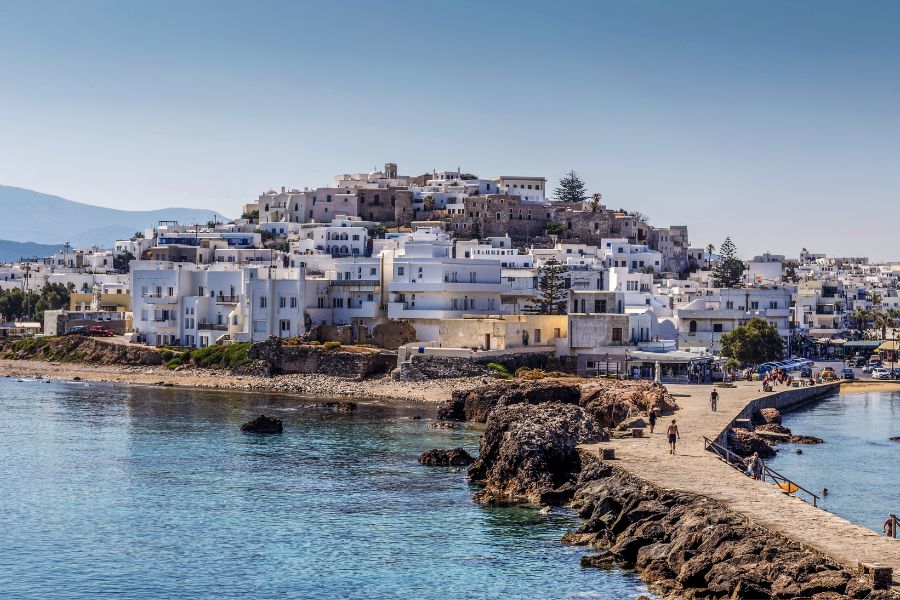
The Neapoli route runs daily in summer. I took it on my way back and enjoyed the coastline views.
Ferry tickets go fast in peak season. Book ahead, especially if you’re bringing a car.
Accommodations: Where to Stay
Chora strikes the best balance of history and comfort, especially if you want to explore the castle and enjoy Kapsali views. I picked a spot near the main square, close to restaurants and the Venetian castle.
Top areas to consider:
- Chora: Historic center, easy castle access, lively evenings
- Kapsali: Right on the beach, harbor views, seafood tavernas
- Agia Pelagia: Larger resort feel, more hotels to choose from
Athina Rooms in Chora turned out to be excellent value—traditional architecture and a view of the castle. The family running it shared local tips and served a homemade breakfast.
Book early if you’re coming in summer. A lot of places close from November to March, so options shrink in winter.
Guesthouses fill up quickly during Greek holidays and August. I found more choices in June and September, plus the weather was perfect.
Transport Tips and Getting Around
Renting a car is probably the best way to explore Kythira’s scattered villages and remote beaches. The island’s coastline runs about 90 kilometers, and attractions are pretty spread out.
I rented from a local agency at the airport. The roads link all the main sites, but some beaches require a short walk down unpaved tracks.
Transport options:
- Car rental: Best for flexibility, a must for reaching remote beaches
- Scooter/ATV: Great for short trips, and locals love them
- Taxi: There are some, but not many—arrange ahead of time
- Bus: Limited service, mostly between main villages
Emmanouil’s car rental near the port offered good rates and a sturdy vehicle. I’ve noticed local agencies often go the extra mile compared to big chains.
Gas stations are few, so top up in Potamos or near the airport. I nearly ran out heading to Kaladi Beach—lesson learned.
Frequently Asked Questions
People usually want to know about historical landmarks, activities, and how to get around this southern Greek island. The Venetian Castle dominates Chora, while Kapsali’s twin bays each have their own vibe.
What historical sites can be found in Chora, Kythira?
The Venetian Castle is Chora’s biggest historical draw. Built in 1503, it sits high on a hill, looking out over the town and harbor.
You can also visit the Archaeological Museum in Chora. The Folklore Collection “Lourandos” showcases local culture and traditions.
A lion of Saint Mark of Venice greets you at the castle entrance, along with a Latin inscription from 1565.
Can you list the top activities to enjoy in Kapsali Harbor?
The twin bays make Kapsali stand out. From the beach, you get a perfect view of the Venetian Castle above.
Hytra, a rocky islet, sits just offshore. Locals claim it’s where Aphrodite was born—who knows, but it’s a fun story.
It’s easy to watch boats come and go from this historic harbor. The lighthouse on the boulder is a great spot for photos
Are there guided tours available to explore the Venetian Castle in Kythira?
I couldn’t find any official guided tours for the Venetian Castle. Most people just wander through on their own.
The castle stays open for public visits. You can walk up from Chora and explore at your own pace.
What are the accommodation options near Chora and Kapsali Harbor?
I didn’t spot specific hotel names for Chora and Kapsali in my research, but booking sites list plenty of options.
Both Chora and Kapsali attract visitors for their scenery and history, so you’ll find places to stay in both areas.
What is the best time of year to visit Kythira for optimal weather?
I don’t have detailed weather stats for Kythira, but like most Greek islands, it usually has mild winters and warm, sunny summers.
The castle and harbor views impress no matter the season. Just keep in mind, weather can sometimes affect boat schedules and outdoor plans.
What transportation options are available for traveling to Kythira?
Getting to Kythira can feel like a bit of an adventure. The island links up with mainland Greece by ferry, which is honestly a pretty scenic way to travel.
Ferry schedules and routes change from time to time, so it’s smart to double-check the latest info before you go. Sometimes, especially during the busy season, you might find direct flights to Kythira as well.
Flights aren’t always available year-round, though. If you love the idea of arriving by sea, the ferry’s definitely worth considering.

